I threw a picnic in our garden the other day. We were busy with all…
Boats on the Thames
What could be better than cruising on the Thames on a warm sunny summer day? Especially on the rural Thames, although I must say, hopping on a boat and seeing London from the river is a special and unique experience that one should try once. But what sort of means of transport is to be found on the Thames? Are there any special boats typical for the Thames? Of course there are, so let’s find out more about the boats on the Thames.
Houseboats
Perhaps the most interesting boats on the Thames are the so called houseboats which appeared in the 1880s. As the Henley Royal Regatta became more and more popular it attracted more visitors who arrived as well as by train and by boats. Of course, houseboats were the privilege of the aristocracy and perhaps some of the middle class who could afford them. Either way, staying on houseboats and having your own party on board was very fashionable. In 1888, 84 houseboats lined the regatta course together with 55 launches. One can imagine the crowd on the Thames. Thee was great rivalry between the crowd of boat owners. Allegedly houseboat owners showed off with the most colourful flower display and Japanese lanterns. The aristocracy took servants on board as well: obviously a cook was needed as well as a maid who helped getting the well heeled dressed etc and a footman.
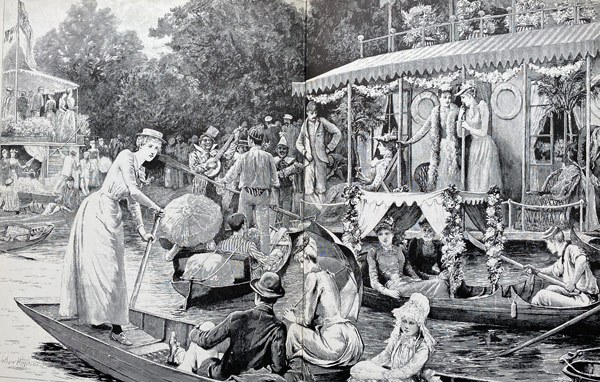
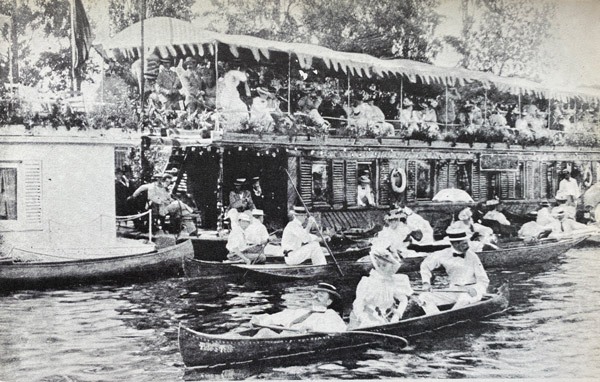
The size of the houseboats varied, but the general rule was the bigger the better. The biggest luxury houseboat on the Thames was the Satsuma with its 70m2 saloon, six bedrooms, kitchen, and bathrooms with running water. It even had a fridge and two pianos on board. The most luxurious houseboat however was the Astoria completed in 1912 which had a dance floor on its upper deck.
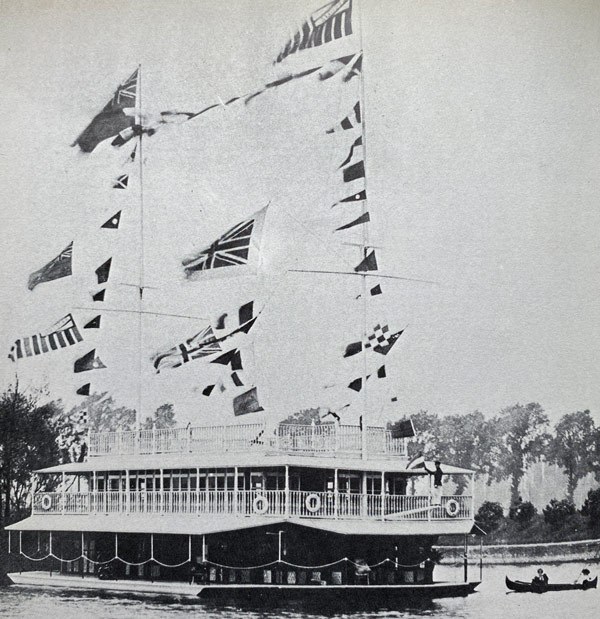
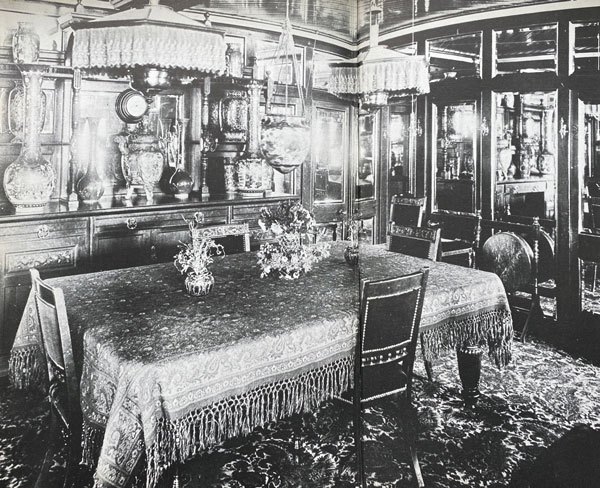

Of course not only the regatta attracted visitors to the river. Spending your holiday by the river and staying on a houseboat became fashionable especially for Londoners. The biggest mooring places were Hampton Court, Shiplake, Reading and Oxford due to their railway connection with the capitol. As families returned year after year to spend their holidays by the river, requirements changed and weekend chalets were built along the river which meant the end of the houseboat era.
Punts
The long, narrow, flat-bottomed boat is probably the most common boat on the Thames. It has been used for fishing, ferrying and bulk transportation. To handle a punt is to use an 8 meter long pole made of pine or other timber, the bottom was painted with tar. Punts were made of wood available along the river, however by the 1800s punts were made of mahogany, they got a varnished finish and the bottom was painted mostly green. In the 1930s camping in a punt became fashionable. Basically iron hoops were put up in the punt and a canvas cover was pulled over them so that you could spend the night sleeping in the punt. What a romantic idea…! Not sure about it in rain though…
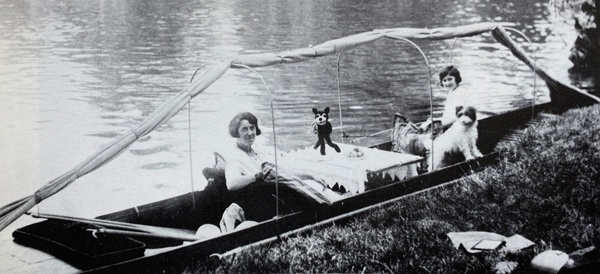
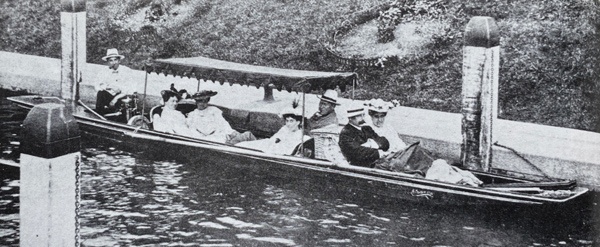
Gigs, skiffs and dinghies
Boats with a backbone (kiel) mainly used on sea appeared on the Thames at the beginning of the 19th century. These boats and gigs were mainly used for pleasure purposes.
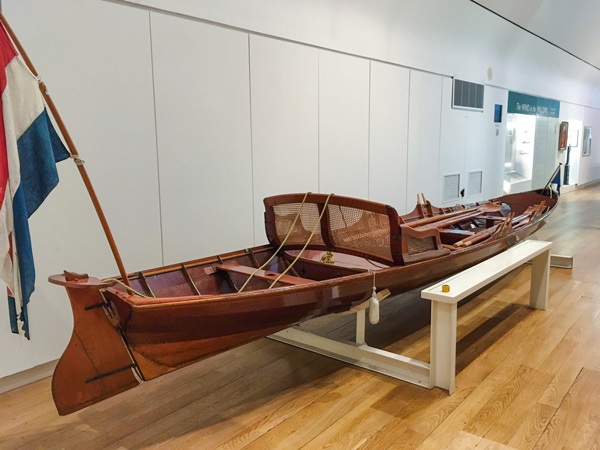
Narrow boats
Narrow boats were mainly used in the British canal systems in the UK, but they were also used on the Thames. Canals were built since the Medieval times but needless to say that they became the main infrastructure during the Industrial Revolution. Before the steam and diesel engines were invented, narrow boats were drawn by horses. By the end of the 19th century it has become fashionable to paint roses and castles on narrow boats but the origin of this tradition is unclear. You can rent a narrow boat on the Thames even for a day but watch out, it can be pricey.
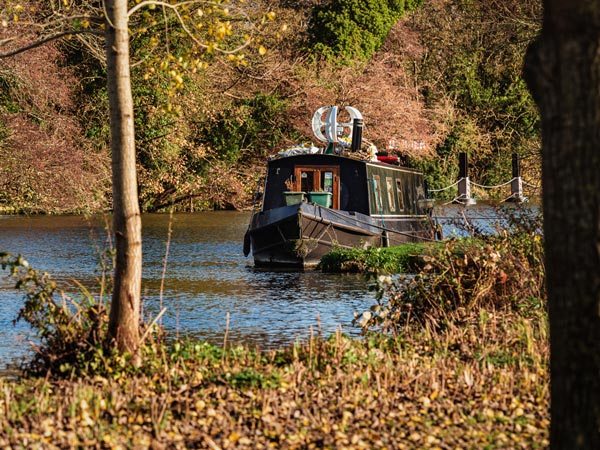
Steamers
The first steamer on the Thames was the Richmond in 1814. It got its name from its route it would run: Richmond and London. By 1888 there were 250 steamers on the Thames of which ca 20 survived today. Their steam engines were replaced by diesel engines.

Electric launches
Electric launches appeared in England in 1882. Although they were quiet and environmental friendly, their disadvantage was that after a few hours they had to stop to recharge the batteries. There were many charging stations available: Hampton, Chertsey, Weybridge, Windsor, Bray, Marlow, Henley, reading, Shillingford, Oxford, the break for charging put many off from using them.
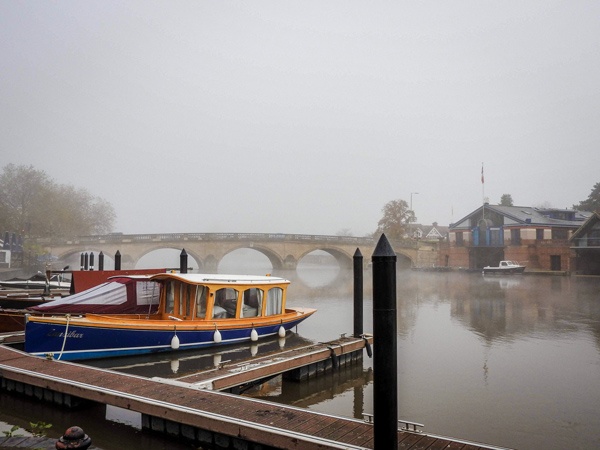
Sailing boats, canoes, SUPs
Of course you would find other popular boats on the Thames as well like sailing boats, canoes and SUPs (stand up paddle boards) which have caused a bit of a craze on the Thames in recent years.
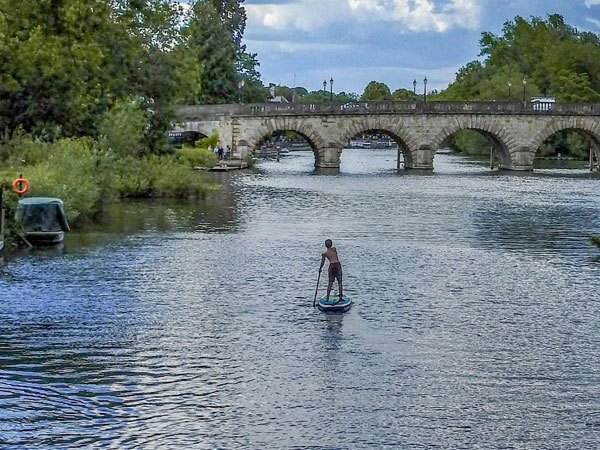
~
I believe every type of boat on the Thames has its own ambience. However, for me it must be an Edwardian boat, a vintage wooden boat and a narrow boat. They just make my heart jump. I’ve had the chance to cruise on the Thames by a vintage wooden boat – I hope I will have the opportunity to try an Edwardian boat as well as a narrow boat as well. What would be your choice?




Comments (0)